Detail of the lightning bar wrap-around and the pickup mini humbucker with a nickel cover on a 1964 Gibson Firebird I.
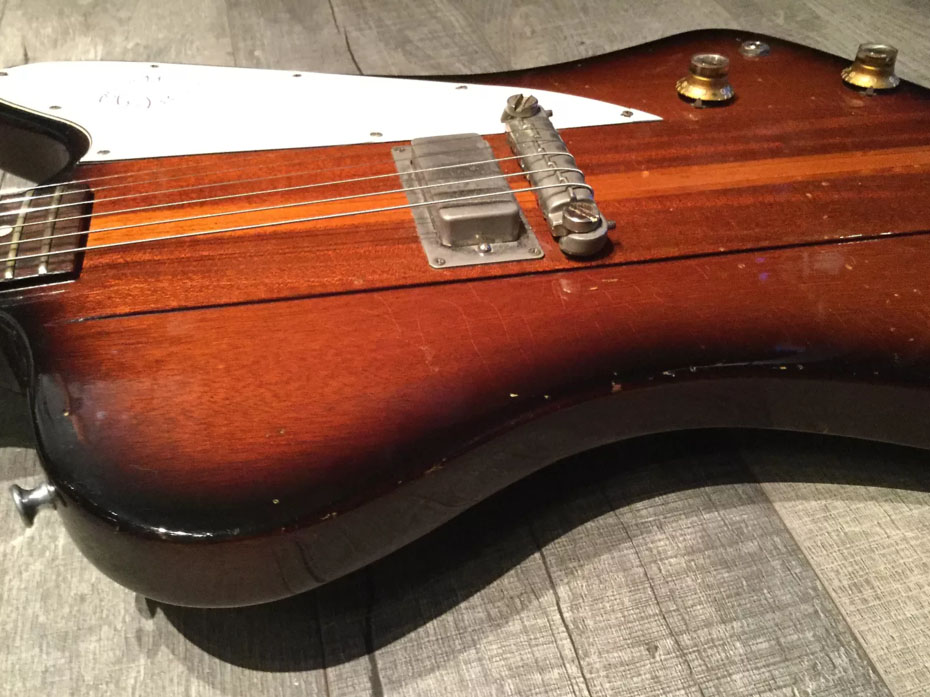
Before 1974 was over Paul also managed to find one of his most beloved guitars, his Gibson Firebird I. The Firebird model was introduced by Gibson in the second half of 1963 and didn’t make much of an impact. Sales figures were decent but only ever amounted to a fraction of the sales figures of the company’s SG models. The reverse-style body that Paul played—thus named because the lower horn was longer than the upper—was only produced 1963-1965 and shipping numbers for 1963 were fairly low so it seems likely that Paul’s Firebird was a 1964 or 1965. (Gibson moved to the non-reverse body shape for the Firebird in the middle of 1965.)
This initial run of Firebirds had a neck-through construction where both the body and neck were mahogany and the fretboard was Brazilian rosewood. The bridge was Gibson’s compensated lightning bar wrap-around and the pickup was a mini humbucker with a nickel cover. The instrument that Paul found looks like it was completely stock and in almost mint condition. And it was Paul who found it (although we’re not quite sure of the chain of events), this particular guitar was not a result of the deal Larry Harris had set up with Gibson. (The Firebird had been discontinued in 1967, although Gibson shipped old stock up to 1969. The model was only brought back for the bicentennial.)
The Doc Petillo Flying V that Paul had used during October was a quick solution to a pressing need and he was on the lookout for a new guitar. As is the case with a lot of the specifics surrounding the guitars played throughout the years, the story of this one is slightly different depending on who tells it and when. Paul has really only mentioned that he “picked up a reverse Firebird used somewhere. Another great guitar" (Metal Edge presents KISS Alive 1996) but we have more details, albeit differing ones, from Rik Schwinden (of tribute band Kissin’ Time) and luthier Kenny Rardin.
According to Schwinden he met Rardin in the early 80s and was told the following story. When KISS played Minot, North Dakota on November 12, 1974, Paul (or someone from the crew) called Marguerite’s Music looking for a 60s "Reverse Firebird". Rardin happened to have one so Paul and a roadie met up with Rardin at the airport in Fargo-Moorehead. Paul liked the Firebird and asked if they could make a trade. Rardin agreed and they traded the Firebird to Paul in exchange for the Doc Petillo Flying V.
In 2018 I asked Rardin about the Doc Petillo Flying V via Facebook and he remembered it a little differently: “I recall that I was buying and selling guitars dealing with a guy in New York and [I] sent him a guitar which was probably a Firebird [that later] found its way to Paul Stanley. [Paul] liked it so much that he called and told me to expect a package due to his gratitude in not over charging him because he was a rock star.” The package Rardin received contained the Doc Petillo Flying V.
The Firebird I probably first shows up in Davenport, Iowa on December 10, 1974. The photo isn't exactly clear but there were precious few guitars in 1974 (or since) that had re-facing banjo-style tuners. However, we also have a set of photos from that show taken by Kirk Koster and every single one of them shows Paul playing the Petillo Flying V (which has also played on December 12). The date of the photo from La Porte is questionable, it's been suggested to be from December 31 in Evansville, Indiana, so the first this-is-as-sure-as-we-can-get date is December 20.
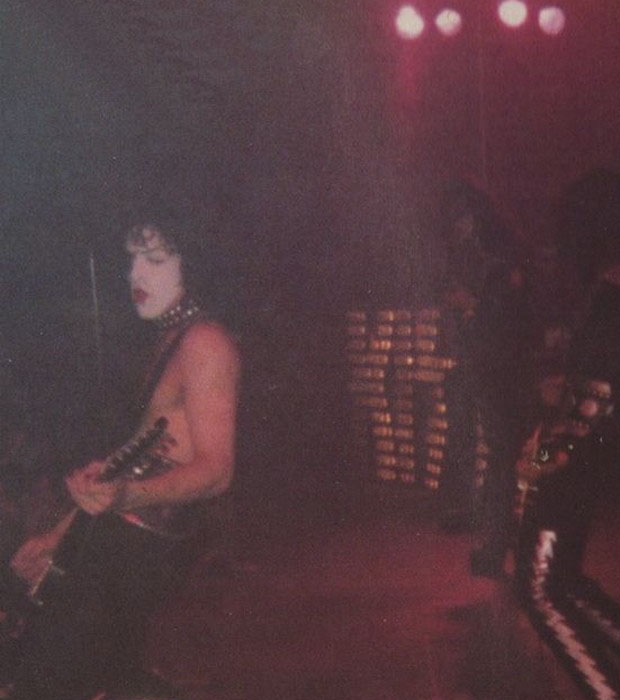
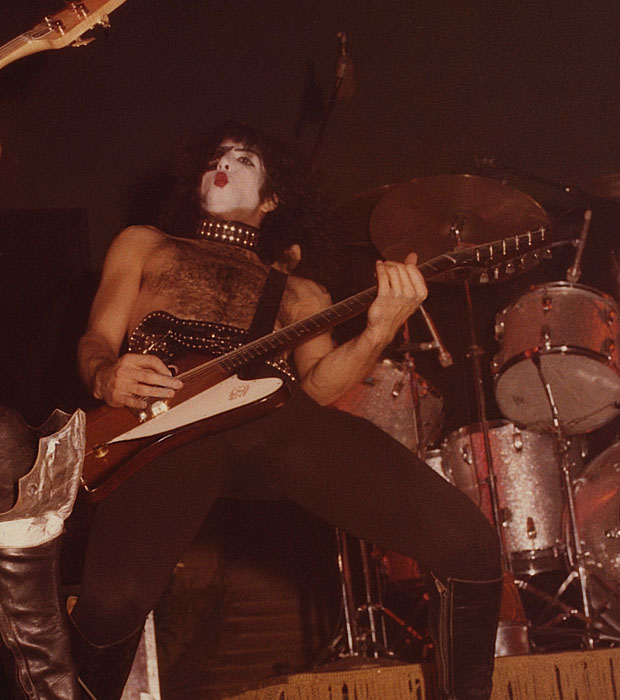
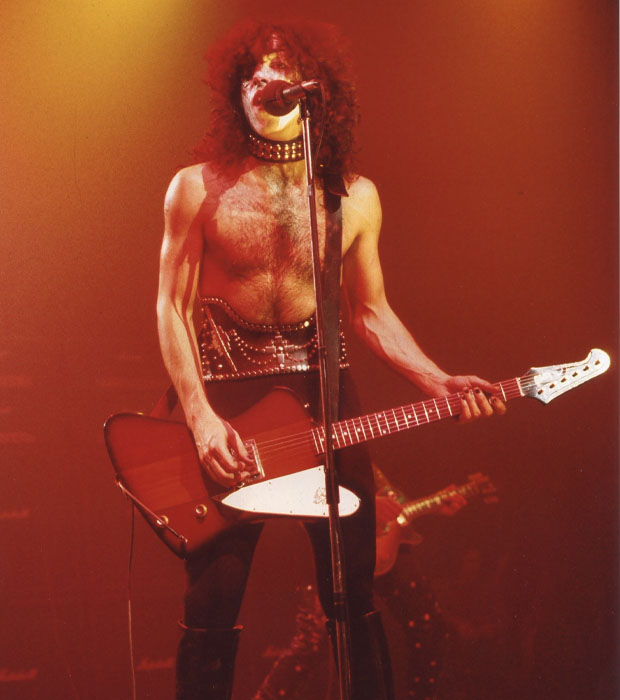
In late 1974 and early 1975 the Firebird I seem to have been on the back burner as the Gibson Midnight Special gets the vast majority of stage use. With the exception of the show at Winterland Ballroom in San Fransisco, California on January 31, 1975, the Firebird I is conspicuously absent. My theory is that it was held back from stage use because the band were working on Dressed To Kill over the latter half of January and the better part of February, first in Larrabee Sound and then in Electric Lady. It really only shows up at a double-header gig in Pennsylvania as seen below. And then it takes a few weeks off again.
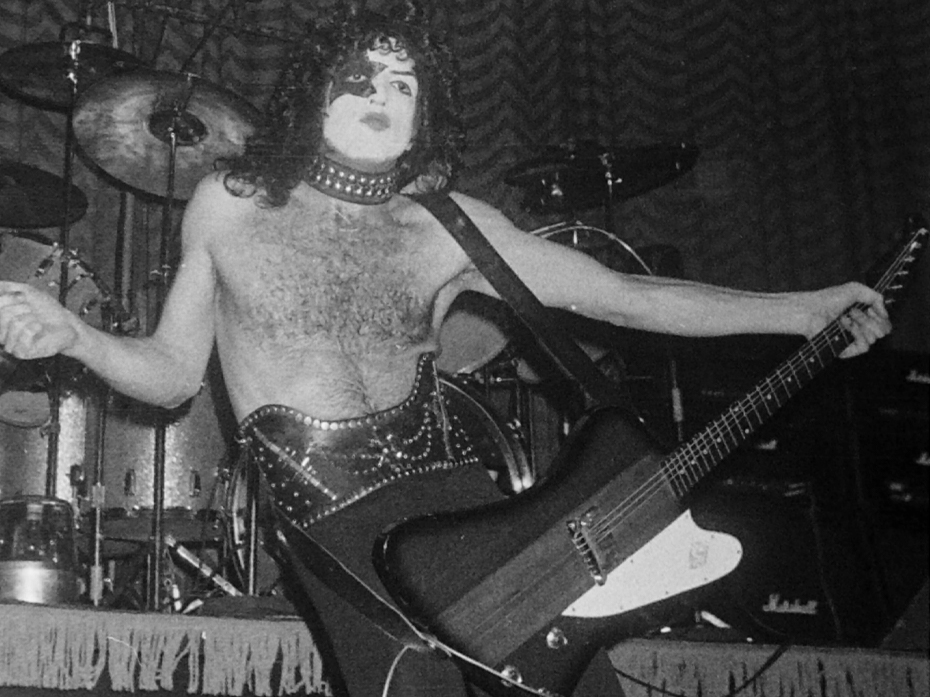
The Firebird I re-appeared when touring resumed in early April. In the interim it had gotten a black finish, a Leo Quan Badass bridge, and the original humbucker had been replaced by a Bill Lawrence super humbucker from one of the Midnight Specials. The knobs had also been changed to speed knobs. "Originally wood finish, I thought it would look cool black. My dad managed an office furniture store and I took it [the Firebird] down there, and one of his guys painted it black." (Metal Edge presents KISS Alive 1996)
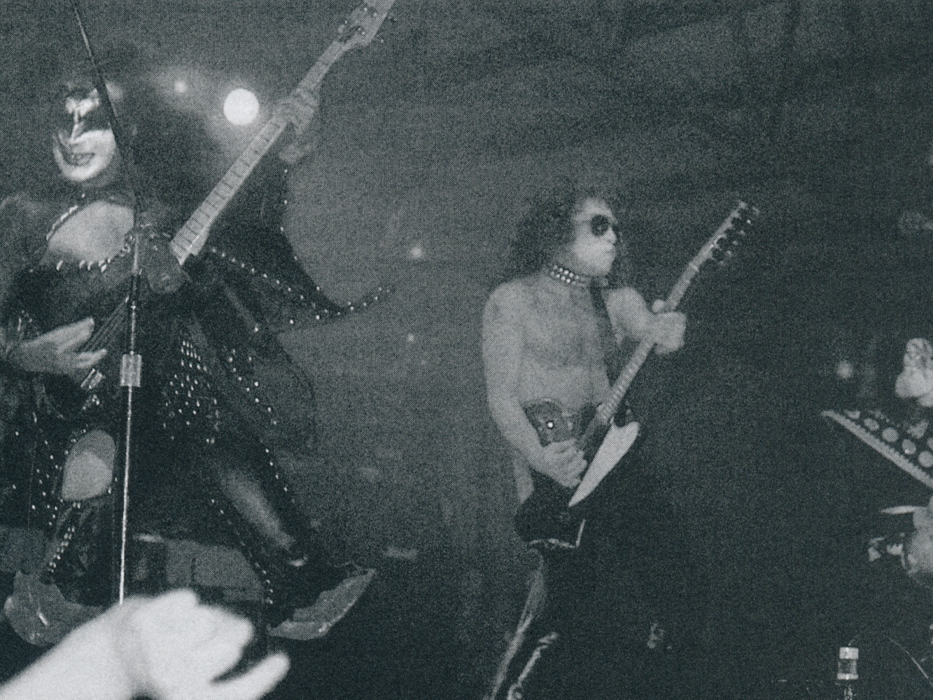
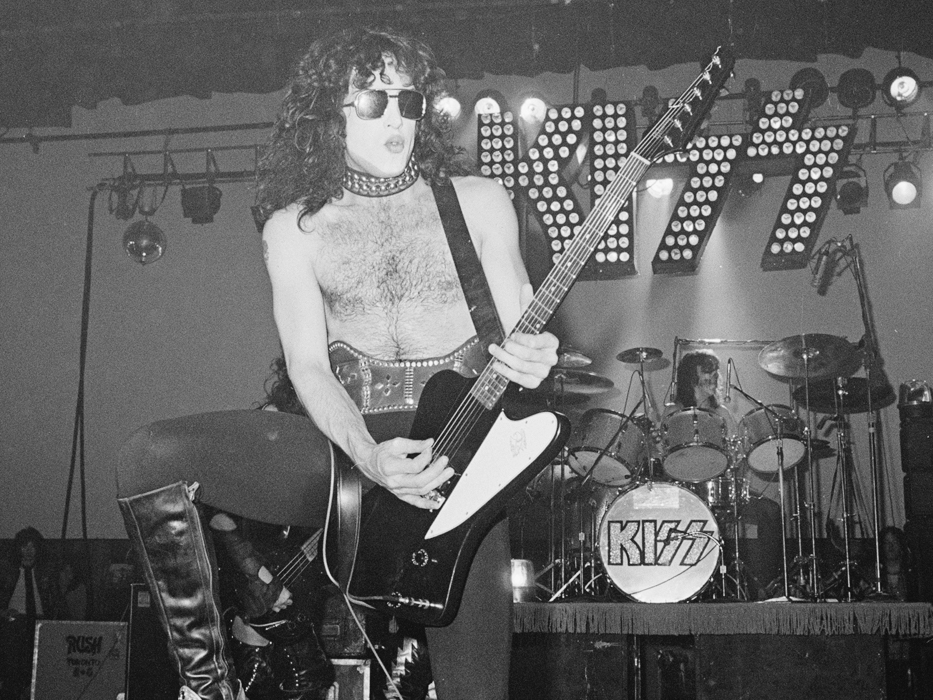
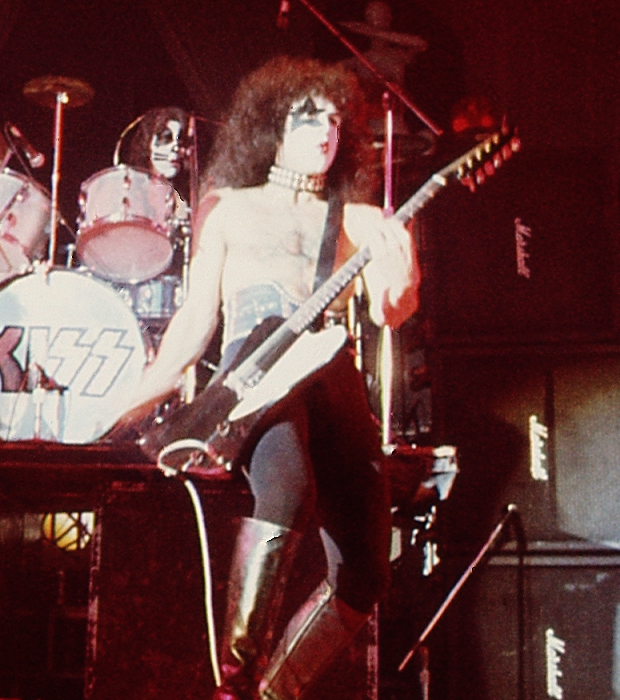
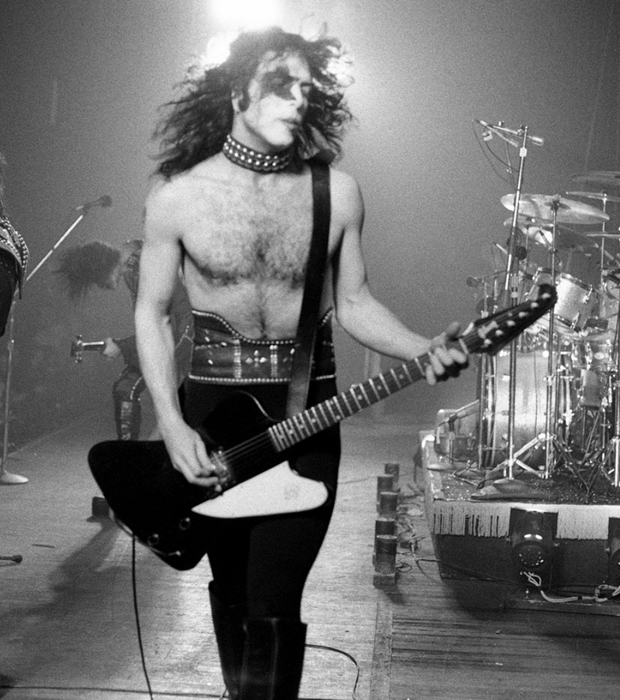
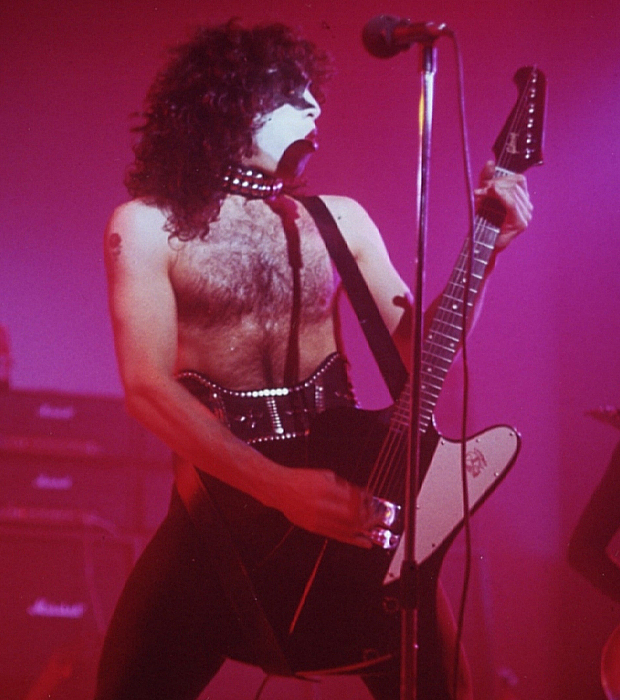
The most high-profile appearances the new-finish Firebird I did were obviously the cover session for Alive! and the "music videos" that were shot that same day.
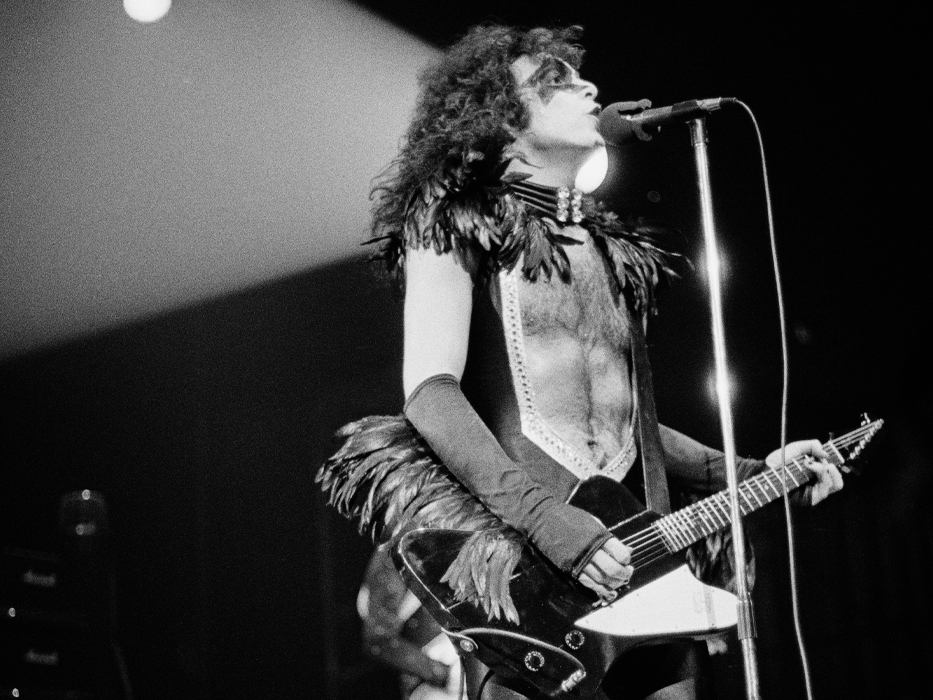
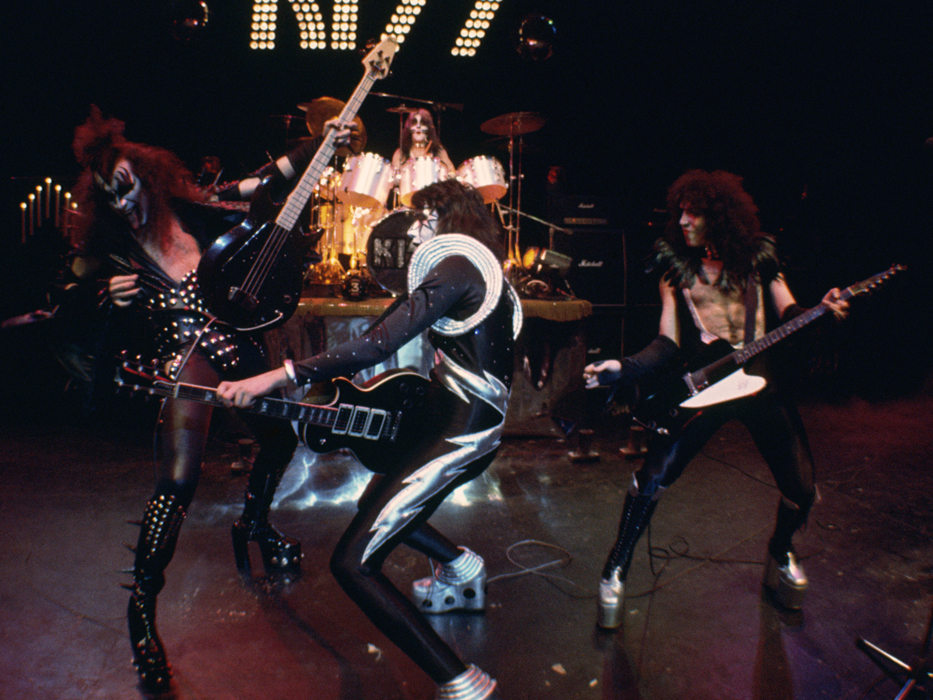
It was then the clear number one for Paul for the rest of the tour in support of Dressed To Kill. And, perhaps most important, the Firebird I was used during all four live recordings that would form the backbone of the album and, it's safe to presume, the overdub sessions at Electric Lady Studios and The Hit Factory.
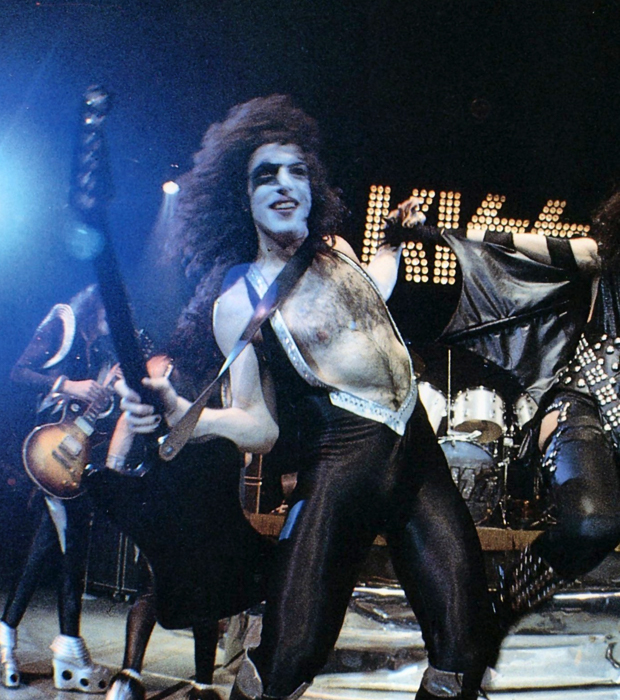
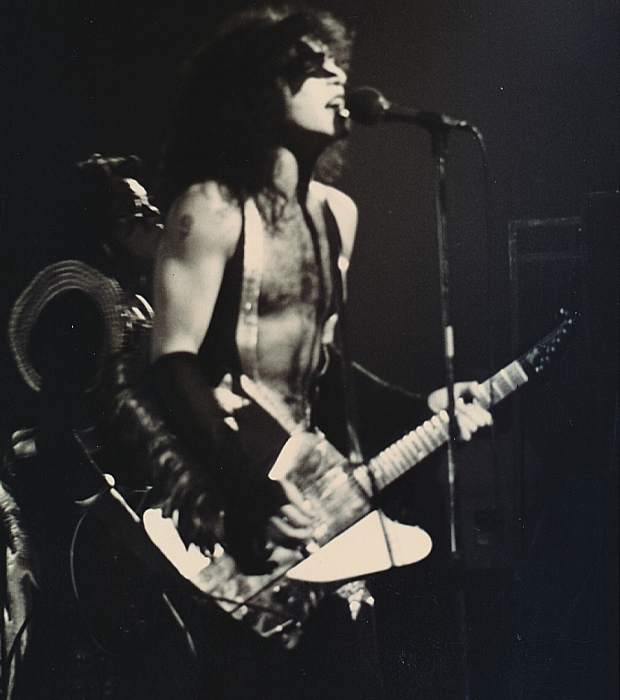
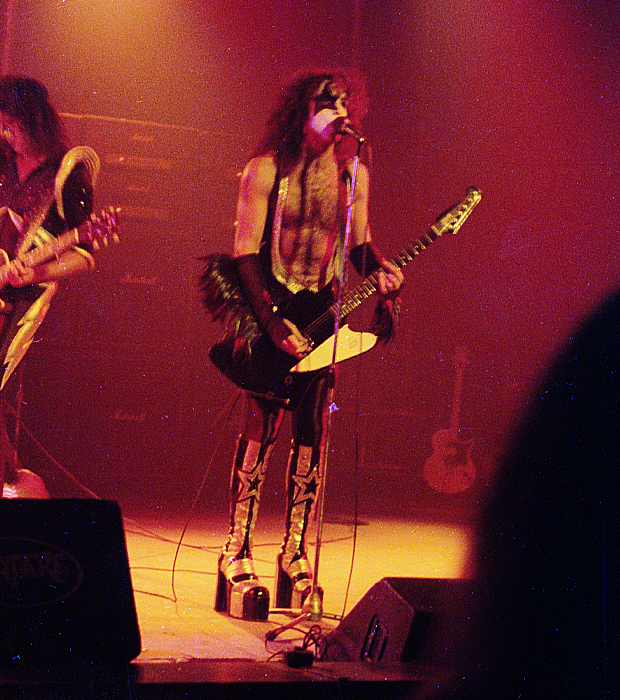
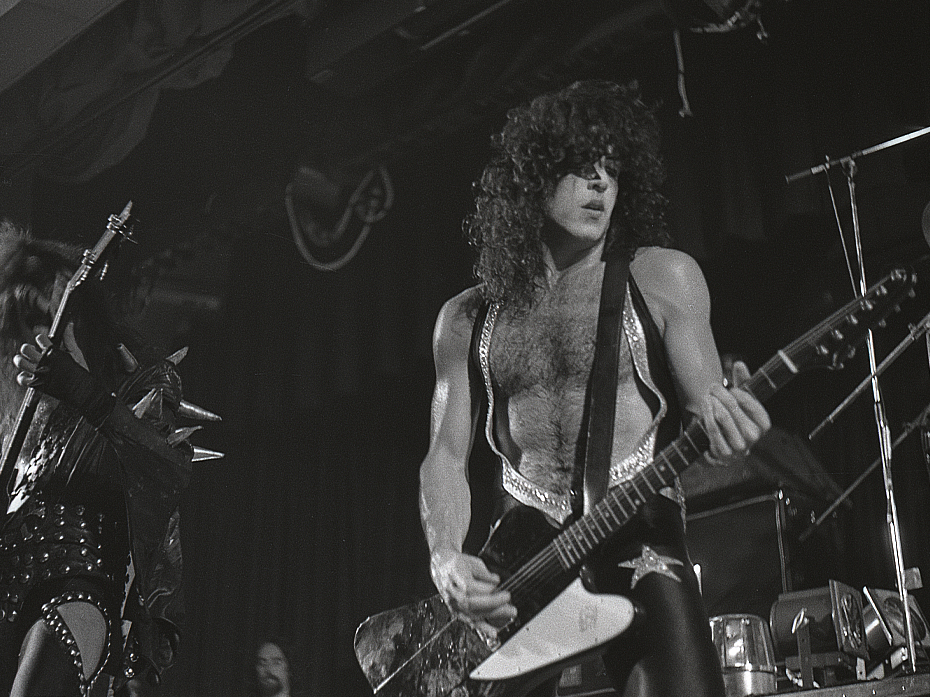
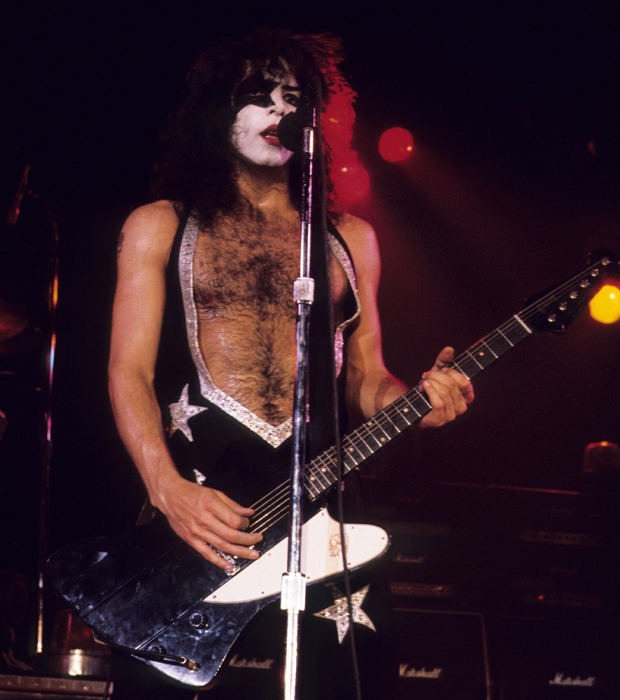
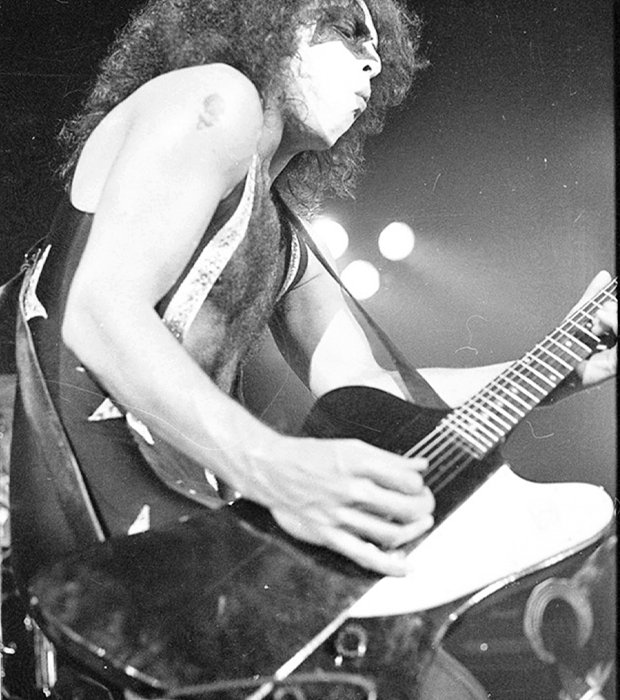
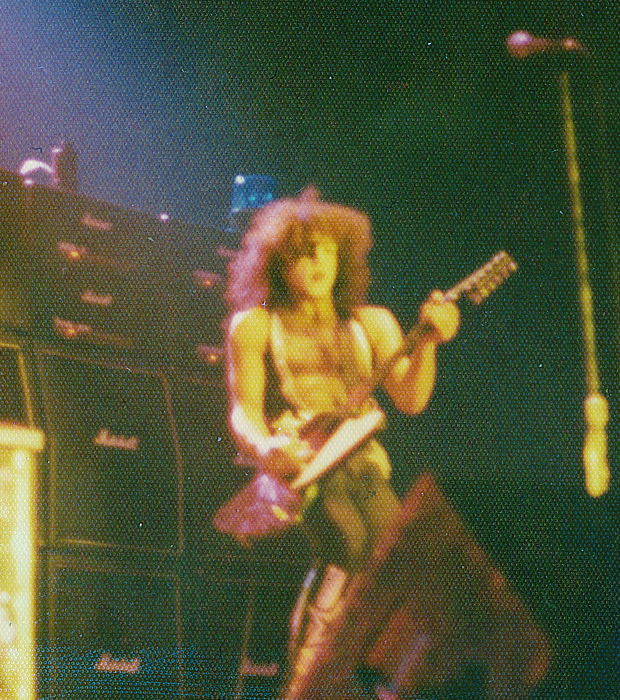
The original plan was for the band to enter the studio with Bob Ezrin in September, do some sporadic touring while Ezrin mixed the new album, go to Europe during the second half of October, and then have the fourth KISS studio album on the shelves in early November. That obviously didn't happen. First Alive! needed more touching up than originally thought and the plan to have it released at the end of the summer were scrapped for a September 10 release date. Then Casablanca and Rock Steady almost came to blows over outstanding royalty payments. The tone between the two soured and in early October—after Aucoin had sent Bogart a letter in mid-September declaring the band's contract to be null and void—there was an actual lawsuit filed. With the two partners at odds the new studio album had to wait. So the band hit the road again.
But the Firebird I was curiously absent. It had been absent for the few shows the band played in September and when "proper" touring resumed in October it was still missing in action. Paul had gotten his first Gibson Flying V and the backup was the Epiphone Coronet.
The reason Paul didn't play his Firebird I during the Alive! Tour was that he held the guitar back for studio work. That's why it was first "missing" in September 1975 when the band had started pre-production work with Ezrin. Unfortunately, the studio was where the guitar would meet its demise. The final recording sessions for Destroyer took place in January 1976 during a nicely planned break in touring (according to Corky Stasiak in Behind the Mask the sessions began on January 4).
"[H]ere we are in the control room playing the music back for Neil Bogart and company. Bob said, 'Let's do a vocal overdub, they need a pair of headphones'. To keep the headphone wire away from your arm when you play, you have to put the headphones through the strap of the guitar. So, not thinking, I grabbed the headphone wire and pulled it. Paul's headphones were still connected to [sic] the guitar strap, which was leaning against an Anvil case. When I yanked the cord, the guitar started to fall. As it was falling, I leaped across the studio to save it, and just missed catching it. I heard a loud 'Boiiing!' and knew exactly what had happened: the guitar had fallen over and the neck snapped in half at the nut. That was Paul's favorite guitar." (Corky Stasiak in Behind the Mask)
"I was in the studio doing Destroyer, and the engineer came in to me—he looked as white as a ghost—and he said, "Come into the studio for a minute." I came in, and my guitar was on the floor in two pieces. He had knocked it over. At that point, Gibson made me a handmade replacement, which was really nice, but it was never the same." (Guitar Player, 1979)
That handmade replacement Firebird I is the one we see here and there during the remainder of the Alive! Tour and the subsequent European Tour. As the photos below show this Firebird had a DiMarzio Super Distorsion rather than the Bill Lawrence humbucker that the original Firebird had gotten in April 1975. Ultimately it was a guitar that Paul didn't care for and it got limited use in May and disappeared after the end of the European Tour.
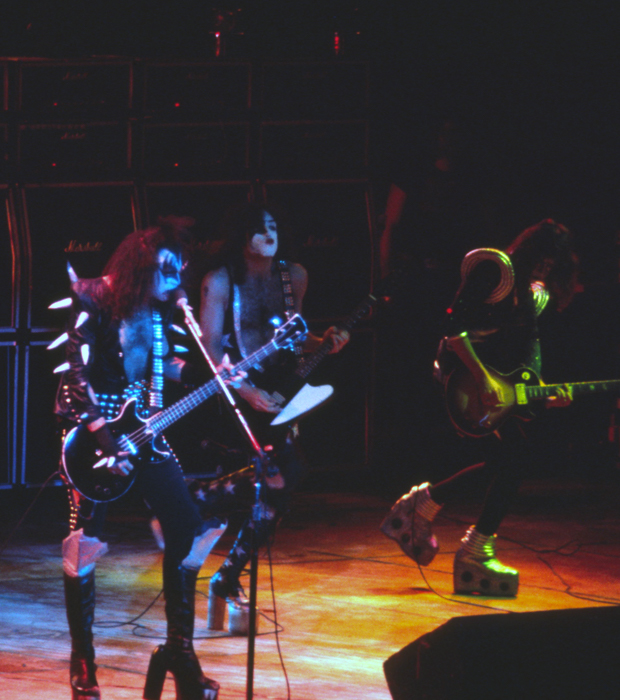
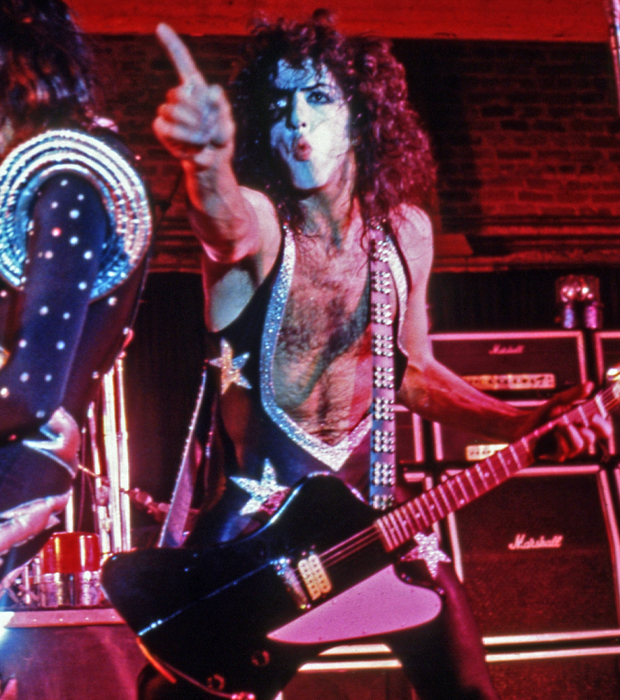
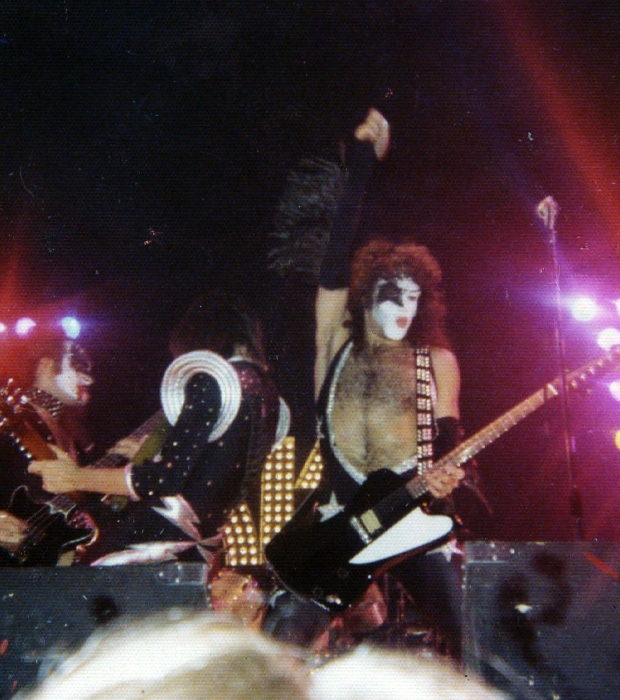
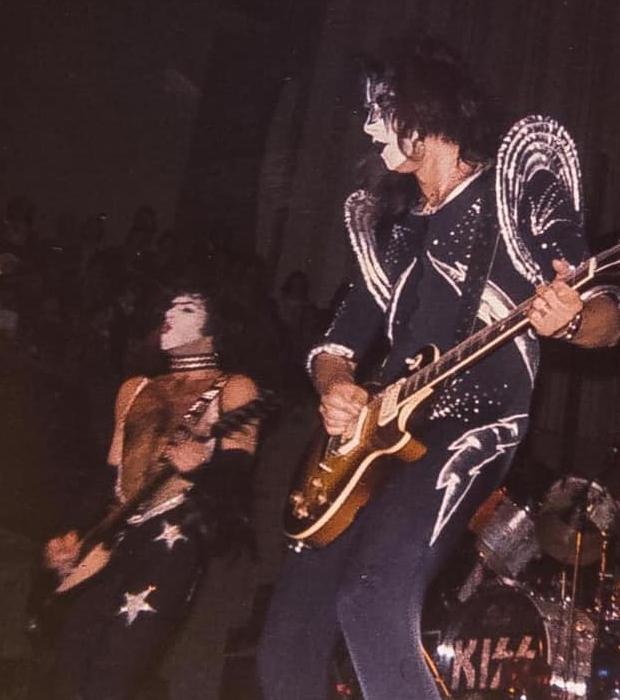
Manchester, England May 13, 1976
Photographer unknown
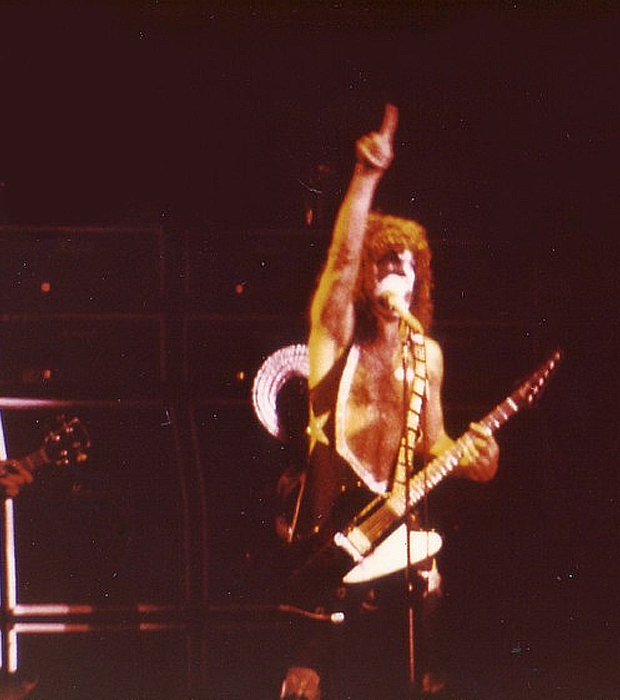
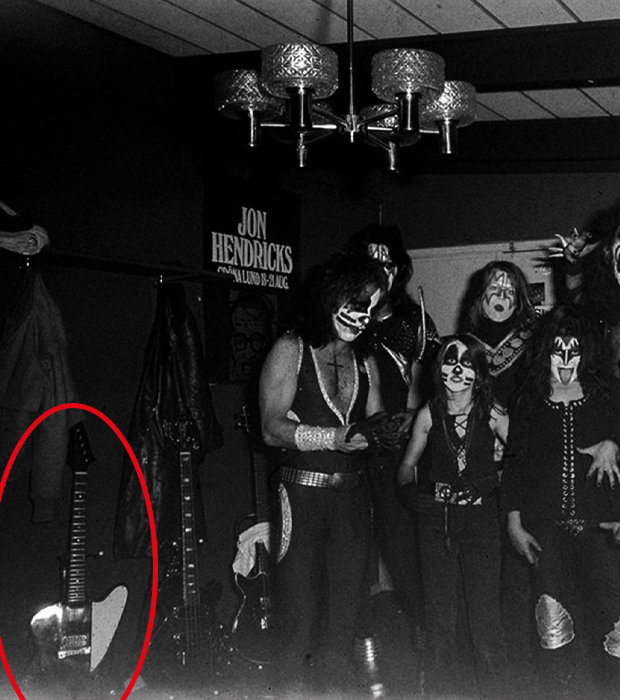
"Gibson offered to make me a copy of [the Firebird I], which was pretty cool because at that point they hadn't been making them for God knows how long. They made me another one, but it was not a very good guitar. I used it but it didn't sound very good." (Metal Edge presents KISS Alive! 1996)